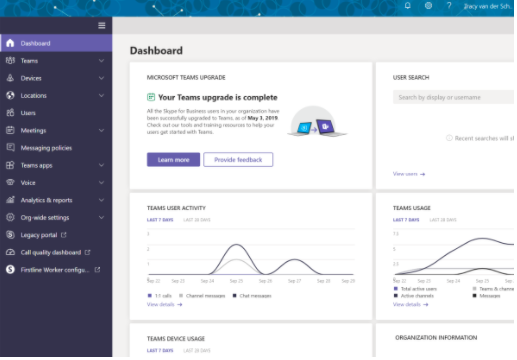There is no stopping the growth of Microsoft Teams as a powerful collaboration and video meeting tool for enterprise companies and other businesses of all sizes. But that surge in new users can come with a sizable blind spot for unified communications and IT admins who want to track usage and quality data, thanks to the limits of the reporting available from the Microsoft Teams admin center.
With Microsoft’s proven track record in productivity and security and the distribution advantage it has because of existing enterprise licenses, Teams is in the fast lane of adoption as the work-rom-home trend continues because of the Covid-19 pandemic. Because of how the Microsoft Teams admin center is structured, monitoring important data can become a time-consuming task that requires hunting around in several different reports and stores of information. And that information isn’t aggregated and modified easily for useful analysis to provide top-level data about how Teams is being used across an organization or look into quality issues that can hinder productivity for users.
These limitations of the Microsoft Teams admin center make Vyopta a valuable solution for all businesses, especially those that have recently added it to their collaboration toolbox next to entrenched players like Cisco or newcomers like Zoom.
Jaiganesh Lakshmisundaram, product manager for Vyopta, said the time savings and detailed insights provided by Vyopta – especially in multivendor environments where many tools have to work in concert at top quality – create a clear advantage for its users.
If you look at key benefits like having one single pane of glass across Microsoft and multivendor environments, Vyopta is able to bridge all of those environments into one single platform and then show it to you in one place,” he said.
“In a traditional enterprise environment even if they have Microsoft they will have one other vendor, be it a conference room solution on Cisco, where if they’re using that they’re also using an interop solution where you’d use Pexip or BlueJeans. One of the things that is advantageous for Vyopta is that with Microsoft Teams you need to dive into three tools at a minimum to check on the data you need. But Vyopta can just aggregate everything you need in one place and we also go above and beyond to give you other service providers as well.”
The Clear Advantages
Lakshmisundaram and the Vyopta team have worked with customers and Microsoft Teams users to zero in on the improvements that can be offered over using the base level admin center data. While there are Microsoft analysis tools that can let users slice and dice the information in sophisticated ways, some of them take advanced training above and beyond what should be necessary to look at video and audio quality or usage patters.
Here are the advantages that shows how Vyopta is a clear choice over using the Microsoft Teams admin center:
- Single-pane-of-glass for Microsoft and multivendor UC
- Tagging allows creation of actionable reporting
- Customizable, dynamic dashboards
- Workflows that scale to the help desk team
- Visibility into video quality
The tagging option can be especially valuable for new Teams clients because it allows admins to track customizable groups – or even individual users – and determine how well a given tool is being adopted. Lakshmisundaram said it can often be the case that entire department may self elect to use a different collaboration tool like Slack, which is especially popular with engineers.
Without trackable, tailored reports new Teams clients may overlook the fact that large employee groups are not using Teams even though overall company usage may look normal.
“You want to understand based on regions and locations, and you can tag users and endpoints, then use the tool to have a report specific to a department or location, that you can push to a department head so they know what is going on. The basic idea is to understand who is using something and how.”
The Difference In Detailed Video Quality Data
While the Microsoft Teams does compile data on the quality of video calls it handles that information is not presented in its admin center, only presents analysis of audio quality on all calls. That can create a situation where video calls experiencing significant packet loss lead to a poor experience for all on the call even the audio may not have suffered and the call rates as “good.”
That incomplete analysis means UC and IT teams won’t know of a potential issue that needs to be corrected. The result can be calls that need to be scrapped and rescheduled, or unsatisfied clients who feel like they’re unable to connect and get the most value on their end.
Vyopta fills this gap by gathering data not available in the Microsoft Teams admin center and presents a true picture of the experience users are having on their video and audio calls.
“So let’s say you’re sharing a video and I’m not and let’s say there’s quality issues because of the video with bad packet loss on that video that would make me on the other end think the quality was terrible, but when we look at that call in MS Teams admin center it might rate the quality is good because it only looks at the audio component,” Lakshmisundaram said. “When Vyopta rates the call we look at audio as well as video to give the complete picture.”
Chad Swiatecki is a business writer and journalist whose work has appeared in Rolling Stone, Billboard, New York Daily News, Austin Business Journal, Austin American-Statesman and many other print and online publications. He lives in Austin, Texas and is a graduate of Michigan State University. Find him online on LinkedIn.








